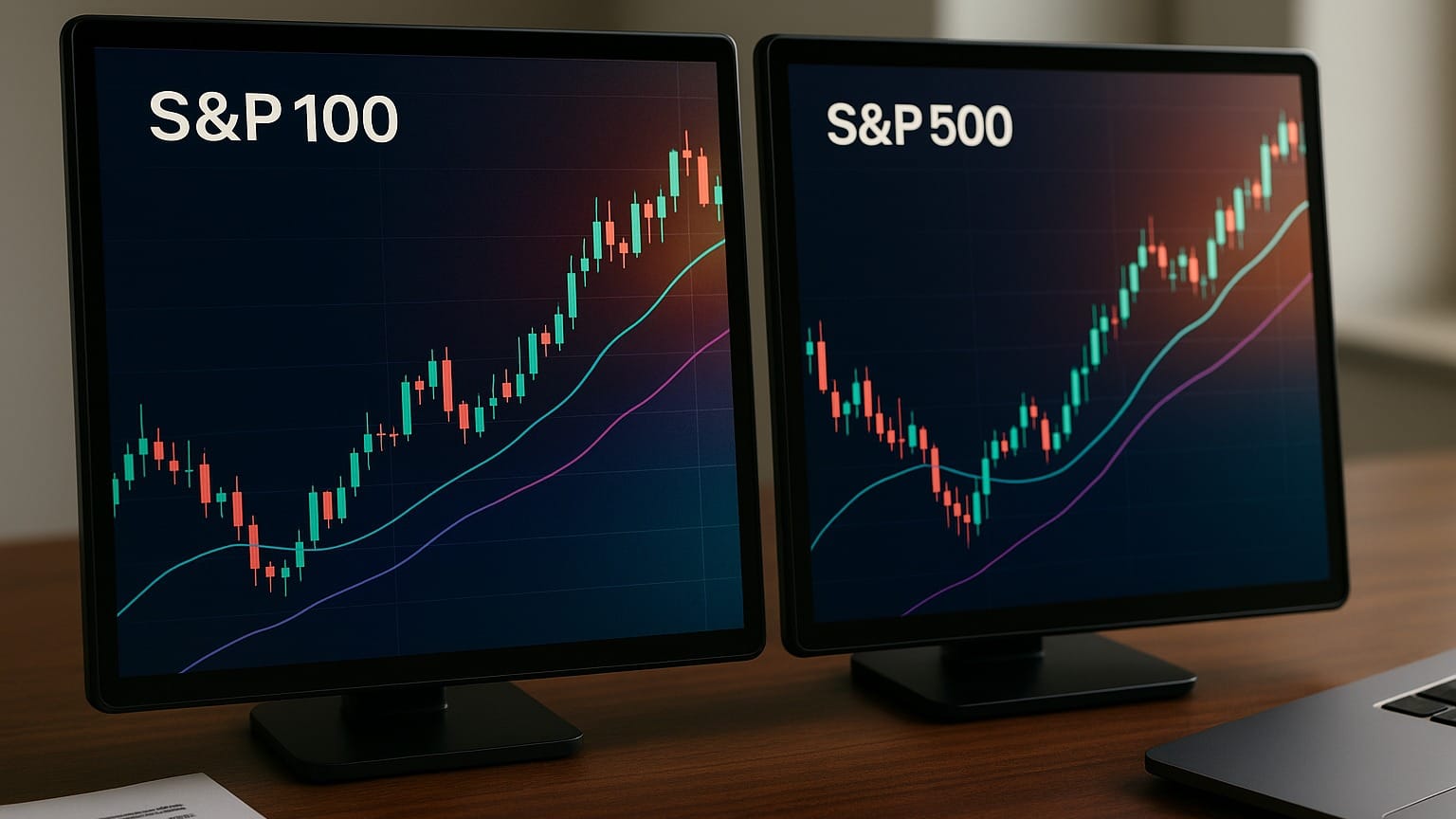Learn the top five mistakes in trend following strategies and how to avoid them for improved trading performance and better risk management.
Avoid These Costly Trend Following Mistakes
Trend following is about riding market momentum, but many traders fail due to these five common mistakes:
- Overtrading: Reacting to market noise instead of genuine trends. Only 10-15% of daily price movements reflect real trends.
- Poor Stop-Loss Management: Skipping stop-losses leads to losses for 89% of traders. Use ATR-based or trailing stops.
- Wrong Trend Analysis: Misinterpreting trends or relying on a single indicator. Combine tools like moving averages, volume, and RSI for confirmation.
- Confusing Pullbacks with Reversals: Exiting too early due to fear or bias. Use volume, trendlines, and multi-timeframe analysis to confirm reversals.
- Ignoring Market Context: Trend strategies fail in sideways markets. Identify market phases using moving averages and volatility indicators.
Quick Fix: Use multi-indicator setups, disciplined stop-losses, and analyze market conditions before acting. Trend following is about trading smarter, not more often.
Common Trend Trading Mistakes
1. Trading Too Often: Confusing Market Noise
Overtrading is one of the most expensive mistakes in trend following. Instead of focusing on actual trends, many traders react to market noise, leading to poor decisions. Research by Barber and Odean found that frequent traders underperform the market by an average of 6.5% annually because of excessive trading based on misinterpreted signals [1].
How to Identify Market Noise
Market noise refers to short-term price changes that don't reflect real trends. Studies show that only 10-15% of daily price movements indicate genuine trends, while the remaining 85-90% is just noise [2]. This makes it tricky for traders to find meaningful opportunities.
Here’s a quick comparison to help you separate noise from real trends:
| Characteristic | Noise | Genuine Trend |
|---|---|---|
| Volume | Low to moderate | Consistently high |
| Price Movement | Erratic, choppy | Smooth, directional |
| Timeframe Impact | Short-term only | Visible across multiple timeframes |
| Indicator Signals | Single indicator | Multiple indicators aligned |
Tools to Improve Trend Detection
Using advanced technical tools can help you better identify trends by combining multi-timeframe analysis with volume studies.
- Multi-indicator Confirmation: Studies show that using multiple indicators together improves trend detection accuracy by 28% [6].
- Longer Timeframes: Data from AQR Capital suggests that holding positions for 1-3 months strikes the right balance between capturing trends and managing transaction costs [5].
- Market Context Filters: During periods of high volatility, adjust your entry criteria and focus on longer timeframes [3].
"The most successful trend followers are those who can distinguish between market noise and genuine opportunities. It's not about trading more – it's about trading smarter", states the Journal of Behavioral Finance, which also notes that disciplined trading strategies improved risk-adjusted returns by 15% [4].
While avoiding overtrading is essential, even correctly identified trends can fail without solid risk management. We'll dive into this in the next section on stop-loss errors.
2. Poor Stop-Loss Management
Research shows that 89% of traders who skip stop-losses end up losing money [7]. This highlights how crucial it is to use stop-loss orders to safeguard your trading capital.
A common pitfall for many traders is falling into cognitive traps like the disposition effect—holding onto losing trades too long while selling profitable ones too quickly [7].
Here are some typical reasons traders avoid stop-losses and how to address them:
| Psychological Factor | Solution |
|---|---|
| Overconfidence | Use systematic ATR-based stops |
| FOMO (Fear of Missing Out) | Set automatic stop-loss orders |
| Emotional Attachment | Treat stop-losses as a necessary business expense |
| Misjudging Risk | Use fixed percentage stops (e.g., 1-2%) |
For example, Bridgewater Associates’ Pure Alpha II fund reportedly achieved a 32% return by using volatility-adjusted stop-loss strategies [citation needed].
Setting Up Automatic Stop-Losses
Here’s how to implement effective stop-loss strategies:
-
Use Volatility-Based Stops
Leverage the Average True Range (ATR) to set stops that adjust to market conditions. For long trades, place stops 2-3 ATR levels below your entry price. This approach allows for normal market swings while still protecting your investment. -
Implement Trailing Stops
Trailing stops are great for locking in profits during extended trends. They automatically adjust as the trade moves in your favor, reducing the need for constant monitoring.
Features like automated stop-loss solutions can help adapt to changing market volatility, streamlining execution and reducing manual errors.
While stop-losses are essential for protecting your funds, they won’t save you if you misread market trends. That’s why the next trading error is even riskier.
3. Wrong Trend Analysis
Even with well-placed stop-losses, misunderstanding trends can be a costly mistake. Poor trend interpretation often drives traders to make decisions that negatively affect their returns.
Bad Entry Timing
Timing is everything in trading, and entering at the wrong moment can derail your strategy. Here are some common entry mistakes and how to address them:
| Mistake | How to Fix It |
|---|---|
| Entering Too Late | Use momentum confirmation |
| Falling for False Breakouts | Check volume for confirmation |
| Jumping in Too Early | Employ multi-timeframe analysis |
Combining Trend Indicators
Relying on just one indicator can lead to false signals or missed opportunities. Using a mix of tools gives a clearer picture of trend strength and direction:
-
Price Action + Volume Analysis
Advanced overlays help filter out short-term noise by analyzing trends across multiple timeframes. -
Multiple Timeframe Confirmation
Looking at trends across different time horizons adds context, helping you make more informed decisions. -
Momentum Validation
This ties back to the principle of reacting to market trends rather than trying to predict them.
To make multiple indicators work for you, assign each one a specific role:
- Use moving averages to identify the trend direction.
- Apply volume analysis to confirm the trend's strength.
- Rely on momentum indicators for precise entry and exit points.
The key to trend analysis is to react to what the market is doing, not to guess where it’s headed [2].
Even with strong analysis, confusing a temporary pullback with a trend reversal is another common pitfall traders must avoid.
4. Confusing Pullbacks with Trend Changes
Misjudging regular market pullbacks as full-blown trend reversals can be a costly error for traders. This mistake often results in exiting profitable trades too soon, leaving potential gains on the table as the trend resumes.
Why Traders Exit Too Early
The real challenge is telling the difference between a routine pullback and a true trend reversal. Many traders fall into this trap due to psychological influences:
| Psychological Factor | How It Affects Trading |
|---|---|
| Fear of Losing Profits | Leads to closing positions too soon |
| Recency Bias | Overreacting to recent price movements |
| Confirmation Bias | Seeking evidence to support an early exit |
Research by Glabadanidis found that strategies incorporating pullback analysis beat basic trend-following approaches by 3.2% annually [2]. This underscores how crucial it is to distinguish between these two market behaviors.
How to Confirm a Trend Change
To avoid premature exits, use these tools to confirm whether a trend is truly reversing:
Key Technical Indicators:
- Volume patterns: Lower volume often signals a pullback, while higher volume might indicate a reversal.
- Moving averages: Pay attention to the 50-day and 200-day moving averages.
- Major trendlines: Watch for breaks that could signal a shift.
- Previous swing lows: These can act as critical support levels.
- Multi-timeframe analysis: Check for trend consistency across different timeframes.
- Volume profile analysis: Helps identify areas of high activity and potential turning points.
These methods help you focus on reacting to price action rather than trying to predict reversals.
"Pullbacks are temporary counter-trend movements within established trends, while reversals shift market direction. Successful trend followers treat pullbacks as continuation opportunities, not exit signals."
To manage pullbacks effectively, consider placing stops below key support levels in an uptrend, adjusting for market volatility. This approach helps protect your position while giving the trend room to breathe.
Mastering the art of identifying pullbacks lays the groundwork for assessing broader market conditions—something we’ll dive into next in "Wrong Market Context."
5. Wrong Market Context
Traders often make a key error: ignoring the broader market context. Even if you’ve nailed trend and pullback analysis, failing to account for market conditions can undo all your hard work. Trend-following strategies work well in directional markets, but they can lead to big losses during sideways or ranging periods.
Using Trend Strategies in Sideways Markets
Applying trend-following tactics in sideways markets is a common pitfall. A study by Forex Analytics of 500 accounts found that traders lost 12% during ranging EUR/USD conditions, while strategies tailored to these markets gained 8% [7].
Here’s how different market phases can disrupt trend-following strategies:
| Market Phase | Characteristics | Impact on Trend Following |
|---|---|---|
| Sideways | Price moves within tight ranges | Triggers false signals, leading to losses |
| Low Volatility | Minimal price movement | Limits profit potential, increases costs |
| Rapid Reversals | Frequent, sharp direction changes | Stop-losses are hit repeatedly |
Tools to Identify Market Conditions
Using tools like moving averages can help you understand the market environment:
- Sideways markets often show parallel moving averages.
- Strong trends feature clear separation between moving averages.
- When prices stay consistently above or below key moving averages, it signals trend strength.
LuxAlgo’s Trend Toolkit is another option. It uses multiple indicators to confirm real trends, helping traders avoid unsuitable conditions. Recognizing the right market context is crucial for avoiding these common trend-following mistakes.
How LuxAlgo’s Advanced Features Help Trend Following
LuxAlgo provides advanced indicators and exclusive tools on TradingView that help tackle common mistakes in trend-following strategies. Equipped with sophisticated automation and insightful analysis, these features empower traders to navigate market conditions more effectively while addressing the five common errors highlighted in this guide.
Trend Analysis Tools
LuxAlgo’s advanced indicators leverage AI to help traders differentiate genuine trends from market noise. By offering clearer confirmation signals, they assist in precise timing for trade entries—reducing the risks associated with misinterpreting trends.
Strategy Testing Tools
Beyond live trading, LuxAlgo provides robust backtesting features. The AI Backtesting Assistant evaluates strategies using techniques such as:
- Monte Carlo simulations to assess strategy reliability
- Multi-market testing across assets like stocks, crypto, and forex
- Key performance metrics such as the Sharpe ratio and maximum drawdown
- Analysis of historical data to refine trading approaches
Alert System Features
LuxAlgo’s alert system helps traders stay disciplined with features including:
- Dynamic stop-loss alerts that adjust based on volatility
- Trailing stop notifications that follow trend movements
- Volume spike alerts to confirm potential breakouts
- Momentum divergence signals to fine-tune exit timing
These features integrate seamlessly with TradingView, and mobile notifications ensure that traders can react swiftly to changing market conditions.
Conclusion: Better Trend Following Methods
Main Points Review
To succeed in trend following, it's essential to recognize and avoid common pitfalls that can harm your trading results. Research indicates that top-performing trend-following strategies often achieve a win rate of about 39% [2]. This makes it critical to focus on maximizing the gains from winning trades.
A study by Clare et al. highlighted how selective entry signals improved risk-adjusted returns over two decades across multiple asset classes. This underscores the value of avoiding overtrading and waiting for clear trend confirmation before acting.
Key elements to address these mistakes include disciplined entry signals, automated risk management, using multiple indicators for confirmation, analyzing pullbacks, and applying market phase filters.
How to Improve Your Trading
To stay aligned with the principles discussed above, traders should combine advanced tools with disciplined execution. Strategies that adapt to shifting market conditions tend to perform better than static approaches [1].
Here are two ways to boost your trend-following results:
- Process Automation and Monitoring: Use systematic alerts for trend shifts, stop-losses, and entry points. Tracking performance metrics helps keep emotions out of your decision-making.
- Market Context Analysis: Assess market environments and adjust your strategies to perform effectively under varying conditions.








